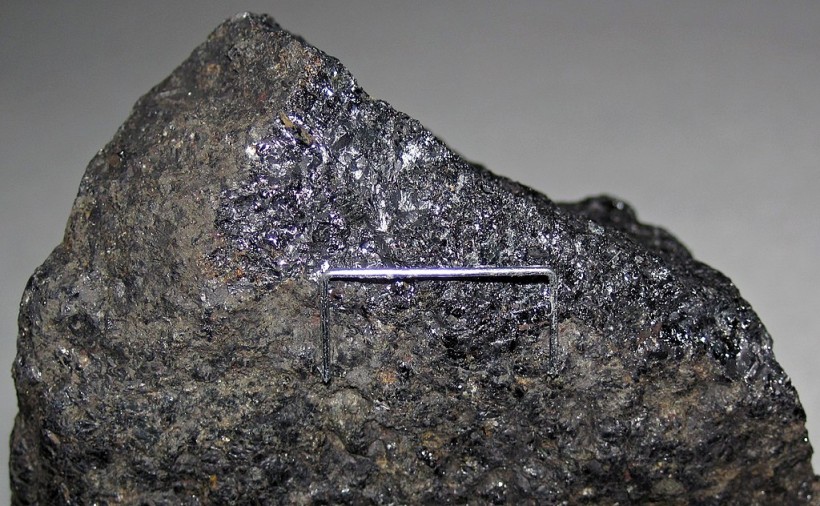Humanity's fascination with magnetic materials began thousands of years ago when they discovered a mineral that has become naturally magnetized and can thus attract iron. Known as lodestone, this mineral led to the discovery of magnetism in ancient history.

(Photo: Wikimedia Commons/ James St. John)
First Known Magnet
Who was the first human to observe that lodestones have magnetic properties is unknown. However, different civilizations began to discover magnetism and lodestone at various historical points.
The oldest known reference to the magnetic properties of lodestone appeared in 600 BC when Greek philosopher Thales of Miletus noted its attraction to iron. Thales attempted to explain this phenomenon through animism, believing that the lodestone possessed a soul. Other Greek philosophers proposed their theories, but the stone remains an unexplained mystery to most ancient people.
Just because the early humans did not know how lodestone worked does not mean they did not find its uses. The first literary reference to magnetism in China was written in 400 BC, entitled "Book of the Devil Valley Master (Guiguzi)." By 200 BC, Chinese text Lüshi Chunqiu asserted that lodestone makes iron come or attract to it.
Ancient Chinese placed lodestones in divining boards used by fortune tellers to predict the future. They also served as the basis of primitive Chinese compasses, which roughly indicated cardinal directions.
At first, these compasses mainly served as an instrument to help the Chinese harmonize their lives with the guidance of their ancient philosophical teachings. As these tools improved, they helped guide many great explorers to new places around the globe.
In the Veracruz region of Mexico, archaeologists also found evidence suggesting that the Olmec civilization used lodestones for navigation and architectural design a thousand years before the first Chinese writing about this phenomenon. Experts discovered a polished magnetic iron ore bar resembling a compass and statues featuring specially placed magnetic ores.
Lodestone has indeed fascinated human societies around the world for thousands of years. Today, lodestone is usually found in classrooms and used by science teachers to help demonstrate the basic principles of magnetism.
What Makes Lodestone Magnetic?
Lodestone is a particular type of mineral magnetite. While all varieties of magnetite exhibit signs of magnetism, only lodestone possesses distinctly north-south polarity.
Lodestone and other magnetic iron ores are usually found worldwide in igneous and metamorphic rocks. Since lodestone occurs naturally, it has been known for thousands of years.
Although modern science has understood the concept of magnetism, the mystery surrounding lodestone has never been eliminated. In recent years, experts have questioned why this rock is relatively rare compared to other kinds of magnetite.
Not all magnetite is found magnetized within the Earth's crust. All magnetites are attracted to magnetic fields, but not all of them become magnetized.
Dr. Peter Wasilewski of NASA's Goddard Space Flight Center demonstrated that only magnetite with a specific composition and crystal structure has the potential to become lodestone. Wasilewski believes that the pieces of magnetite that naturally realized this potential did so by being struck with lightning.
The electric discharge created by lightning creates a temporary but powerful magnetic field. This field is strong enough to magnetize lodestone, while the Earth's magnetic field is not. Wasilewski successfully demonstrated the magnetization of magnetite pieces at a laboratory in New Mexico that specializes in studying lightning.
RELATED ARTICLE: Can Magnetism Bend Heat And Sound? Study Reveals A New Dimension to Magnetic Fields
Check out more news and information on Magnetism in Science Times.




![Humans Will Go Extinct on Earth in 250 Million Years; Mass Extinction Will Occur Sooner if Burning Fossil Fuels Continues [Study]](https://1721181113.rsc.cdn77.org/data/thumbs/full/53373/89/56/50/40/humans-will-go-extinct-on-earth-in-250-million-years-mass-extinction-will-occur-sooner-if-burning-fossil-fuels-continues-study.jpeg)









